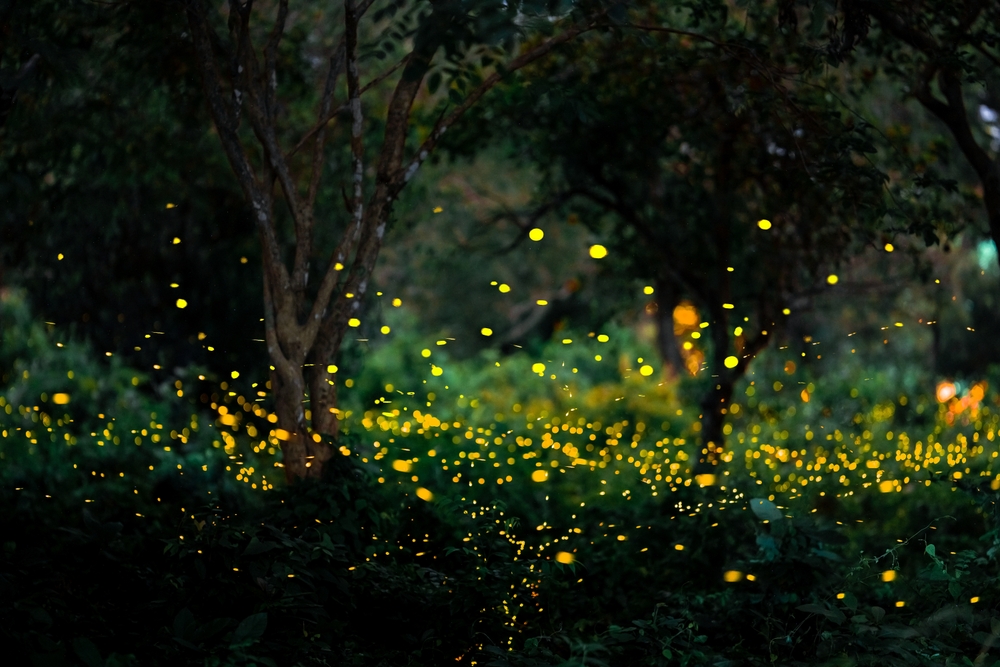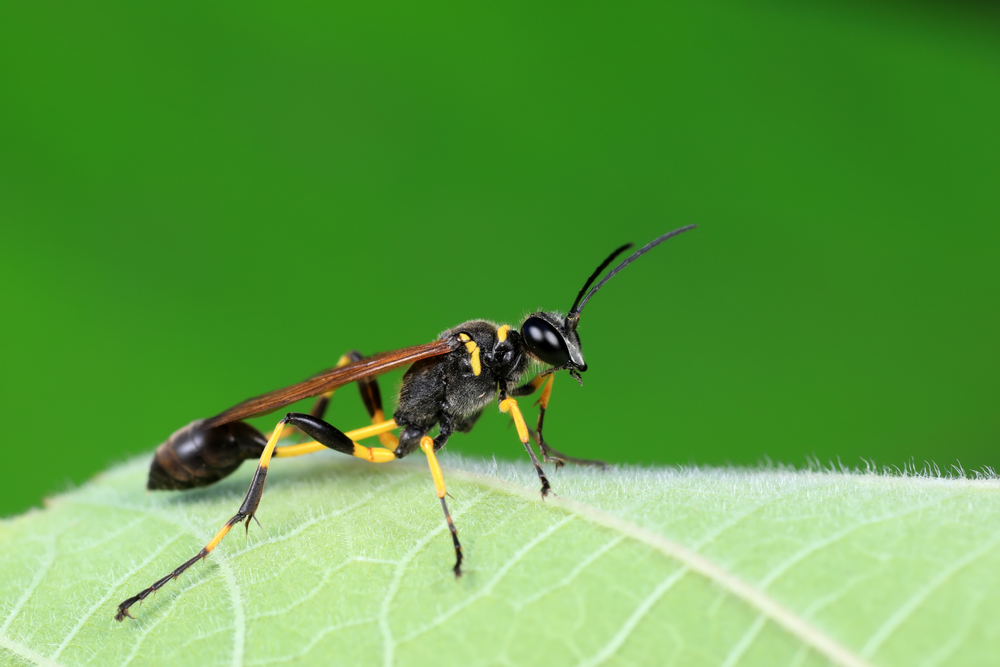Copyright © Everyday Narrative 2024. All rights reserved.
Copyright © Everyday Narrative 2024. All rights reserved.
- An Everyday Narrative Gallery Special -
Two Broods

Two broods of cicadas have spent more than a decade underground, sipping on tree root juices, and now they are emerging at the same time. Having been underground for 13 and 17 years respectively, these cicadas are now ready for the outside world.
Once they emerge, the collective songs of cicadas can be as loud as jet engines. Scientists who study them often wear earmuffs to protect their hearing. In South Carolina the emerging cicadas have been so loud, residents in one county are calling the sheriff’s office asking why they can hear sirens or a loud roar.
Cicadas aren’t the only unusual animals in North America, we look at some of the stranger creatures to grace the continent and their unusual behaviours.
Monarch Butterfly Migration

Every autumn, the skies above North America become the stage for one of nature’s most spectacular performances: the migration of monarch butterflies. Millions of these vibrant orange and black insects travel over 3,000 miles from the north eastern United States and Canada to their wintering grounds in the mountainous forests of central Mexico.
This incredible journey is not only one of the longest migrations of any insect species but also a multi-generational odyssey, where no single butterfly completes the round trip. Instead, successive generations hatch, mature, and continue the journey their ancestors began, navigating with astonishing precision to a place they have never seen before.
Black Bears

Black bears across North America engage in a form of hibernation that is as curious as it is critical for their survival through the harsh winter months. Unlike true hibernators whose body temperatures drop to near freezing, black bears merely enter a state of torpor where their body temperature decreases slightly, allowing them to wake up quickly if disturbed.
They spend up to seven months without eating, drinking, urinating, or defecating, relying entirely on fat reserves. This remarkable adaptation can be observed from Alaska down through much of the United States wherever dense forests provide the necessary refuge.
Fireflies

Fireflies lighting up summer evenings are not just a charming spectacle but also a complex system of communication essential for their survival. These insects, found throughout North America, use bioluminescence to attract mates and ward off predators.
Each species has its own unique pattern of flashes, creating a code that helps males and females find each other in the dark.
Salmon

Salmon spawning is a heroic and fatal journey that takes place annually in the rivers and streams of North America. From the Pacific waters of Alaska to the mountain streams of Idaho, these fish return to their natal waters to reproduce, often traveling hundreds of miles against strong currents and numerous obstacles.
After spawning, the adults die, but their bodies provide vital nutrients to the aquatic ecosystem, supporting the next generation of salmon as well as numerous other species along the food chain.
Pronghorns

Pronghorn antelope undertake one of North America’s most epic terrestrial migrations, a perilous journey that stretches across the grasslands of the American West. Known for their incredible speed, pronghorns can travel hundreds of miles between seasonal feeding grounds, navigating through predator territories and increasingly fragmented landscapes.
This migration underscores the need for connected habitats to support wildlife movements across changing environments.
Hognose Snakes

The hognose snake’s dramatic flair for playing dead is an unusual and effective survival tactic observed throughout the United States.
When threatened, this snake not only flattens its head to appear larger but if that fails, it will flip onto its back, open its mouth, emit a foul smell, and play dead, deterring predators with its convincing act of demise.
The American Alligator

In the wetlands of the south eastern United States, the temperature of the American alligator’s nest is crucial as it determines the sex of the hatchlings.
Warmer temperatures tend to produce males while cooler ones yield females. This remarkable form of temperature-dependent sex determination highlights the sensitivity of reptilian development to environmental conditions.
Beavers

North America’s beavers are master engineers, known for their ability to transform landscapes through the construction of dams. These structures, built from cut branches and mud across streams, create wetlands that support a diverse range of species and play a critical role in maintaining local water levels and reducing erosion.
Found from the woodlands of Canada to the mountain streams of the Rocky Mountains, beavers are ecological architects.
Hummingbirds

Hummingbirds, found from Alaska to the tip of South America, exhibit the incredible ability to hover and fly backward thanks to their rapid wing beats and unique skeletal and muscle formations.
This allows them to access nectar while suspended in the air, a critical adaptation for feeding from flowers while expending minimal energy on perching.
California Ground Squirrels

California ground squirrels have developed a unique method of predator evasion by using the skin and scent of their primary predator, the rattlesnake.
They chew the shed skins of snakes and then groom their fur with it, masking their own scent to confuse the snakes. This clever use of olfactory camouflage is observed in the arid environments of the American West, where both species coexist.
The Mud Dauber Wasp

The mud dauber wasp in North America practices a fascinating form of food storage. This wasp captures, paralyzes, and stores spiders in its clay nests. The live, immobilized spiders serve as fresh food for the wasp’s larvae when they hatch.
This behaviour can be observed in various environments across the continent, showcasing a gruesome yet effective survival strategy.
The Mourning Cloak Butterfly

The mourning cloak butterfly, found across North America, utilizes antifreeze-like chemicals in its blood to survive the freezing winter temperatures.
This allows the butterfly to hibernate in a state of suspended animation and re-emerge in the spring, ready to mate and lay eggs. This adaptation is crucial for surviving the seasonal extremes of its habitat.
Periodic Cicadas

Periodic cicadas, particularly notable in eastern North America, spend 13 or 17 years underground before emerging almost simultaneously in vast numbers.
This mass emergence overwhelms predators, ensuring that enough cicadas survive to reproduce, a phenomenon that results in the deafening and iconic soundscapes of summer.
Wood Frogs

The wood frog’s use of antifreeze proteins allows it to survive the freezing temperatures of the northern United States and Canada.
These frogs can freeze solid and then thaw with the arrival of spring, resuming their normal functions almost immediately. This remarkable survival technique ensures their persistence through harsh winters.
Glass Frogs

The glass frog, with its partially transparent skin seen in the rainforests of southern Mexico, is a marvel of camouflage.
While not deeply studied in North America, its close relatives in the north exhibit less dramatic but equally fascinating adaptations for survival in dense forest ecosystems.
Sea Otters

Sea otters use tools, a rare behavior among mammals that showcases their intelligence and adaptability.
Found along the Pacific coast from California to Alaska, these otters use rocks to crack open shellfish, demonstrating an advanced level of problem-solving and manual dexterity.
The Burrowing Owl

The burrowing owl’s strategy of using dung to attract insects, observed across grasslands in North and South America, is a clever tactic for luring prey within striking distance.
This behaviour highlights the owl’s adaptability and resourcefulness in arid environments where food can be scarce.
The Viceroy Butterfly

The viceroy butterfly, once thought to mimic the toxic monarch to avoid predators, is found throughout North America and is now recognized for its own chemical defenses, shared in a mutual mimicry that benefits both species.
This intricate evolutionary dance illustrates the complex interactions and survival strategies within ecosystems.
Gallery Specials
Latest Articles
- Disney Remakes the Timeless Classic ‘Snow White’
- Here’s what to expect from Season 4 of Slow Horses, only on Apple TV+
- Marvel’s ‘Agatha All Along’ coming soon
- Adam Sandler Announces ‘Happy Gilmore 2’
- Jennifer Lopez files for divorce from Ben Affleck to end her fourth marriage
- On this day in 1995, the Battle of Britpop reached its climax
- Vince Vaughn Returns in the New Dark Apple TV+ Comedy ‘Bad Monkey’
- Matt Damon and Casey Affleck lead a star-studded cast in ‘The Instigators’
- The anticipation builds for ‘The Last of Us’ Season 2
- Has Simone Biles cemented her place as the greatest American Olympian of all time?
- Anticipation grows for the Disney sequel ‘Moana 2’
- A battle begins at Royal Troon for The Open Golf Championship 2024
- The evolution of binge-watching
- Tom Hanks reunites with Robin Wright in ‘Here’
- Taylor Swift’s ‘Eras Tour’ is a phenomenal success















